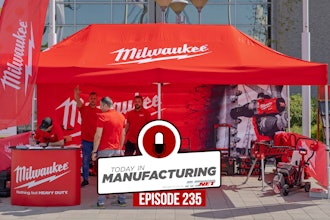Filmmaker James Cameron has been called a visionary, but it is difficult to imagine he ever envisioned fictional technology from one of his sci-fi movies materializing.
This team of engineers may not have cited “Terminator 2: Judgment Day” as inspiration for this development, but their miniature robots capable of shape-shifting between a liquid and solid state look like they could have come straight from Skynet.
The material that makes this possible is called “magnetoactive liquid-solid phase transitional matter,” or MPTM, and the team recently published a study where they placed robots with this material in an obstacle course that tested mobility and “shape-morphing.”
A video from the study shows a small human-like figure that resembles a LEGO slowly escaping a cage by turning into liquid. It is then pulled through the bars by an external magnetic field. Once it is out of the cell, the figure restores its original state by flowing into a mold.
The jailbreak wasn’t the only task the robots underwent on its obstacle course. They also jumped a 21-millimeter-deep moat, climbed a 12-millimeter wall and split up to cooperatively move objects before merging. The study also said the material could bear about 66 pounds and move at approximately 3.3 miles per hour.
The team created MPTM by embedding magnetic particles in gallium, a metal with a melting point of about 85.6 degrees Fahrenheit.
According to senior author and mechanical engineer Carmel Majidi of Carnegie Mellon University, the magnetic particles make the material responsive to an alternating magnetic field and provide the robots the ability to move in response to the magnetic field.
This differs from existing phase-shifting materials that require electrical currents, heat guns and other external heat sources to transform. MPTM also features an extremely fluid liquid phase compared to other shape-shifting materials.
Study lead and engineer at The Chinese University of Hong Kong Chengfeng Pan said that switching between liquid and solid states grants robots more functionality.
Despite its resemblance to the T-1000, these robots will not be hunting down any Connor descendants. Instead, the team listed possible applications for the material that includes wireless circuit assembly and repair, assembling parts in hard-to-reach spaces, removing foreign objects from a stomach and delivering drugs to a stomach.






















